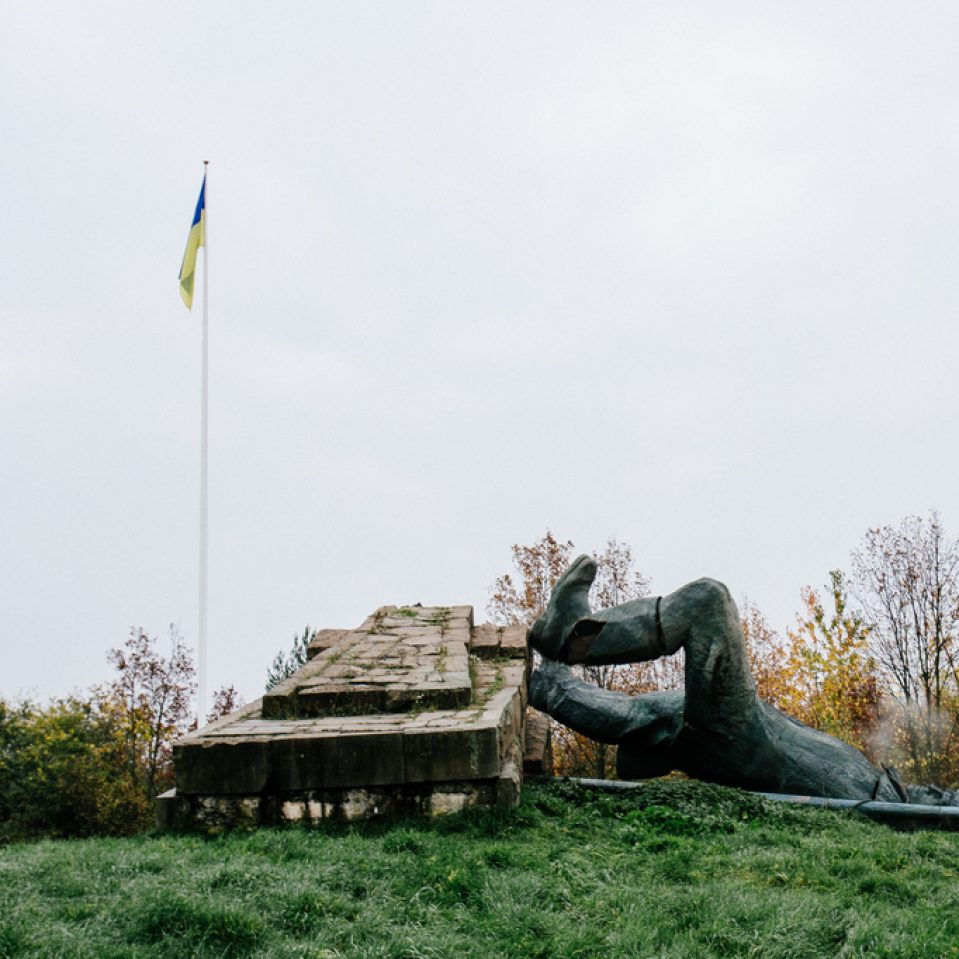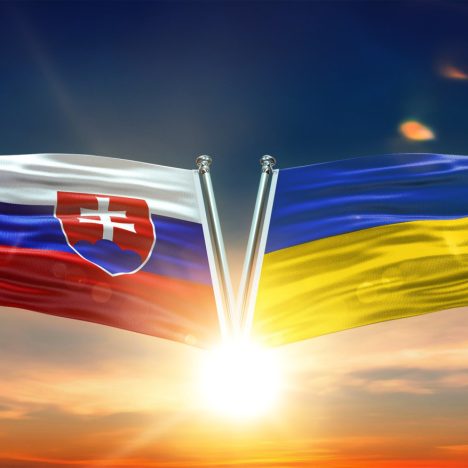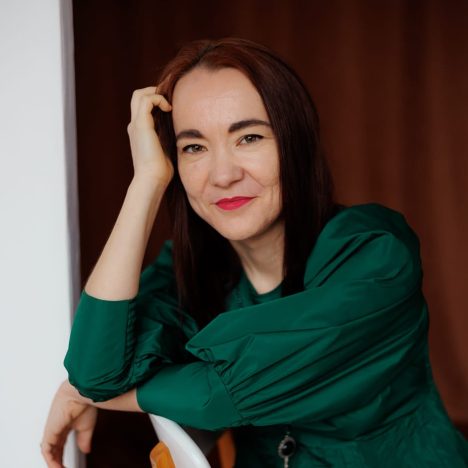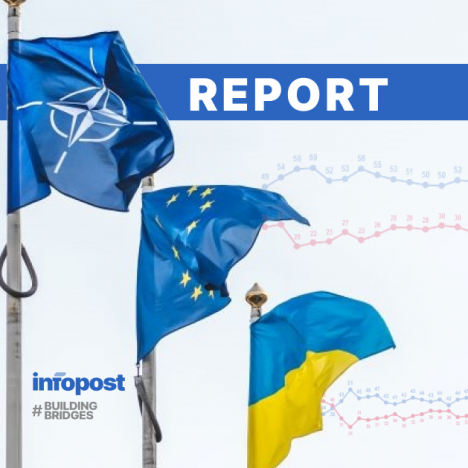The Russian invasion and the state of war per se, especially the way it is covered by the Ukrainian media and is perceived by Ukrainian society, had changed dramatically the Ukrainian media space for the last year. This impact is likely to have long-term consequences for the development of Ukraine’s media space, regardless of when the war ultimately comes to an end. This report aims to provide a comprehensive overview of the impact of the first year of the Russian full-scale invasion on Ukraine’s media space by examining 10 key features that have emerged
10 Features of Ukrainian Mediaspace:
- Rapid and total “Ukrainization” of the public information space and displacement of the Russian language from it.
- The level of influence and penetration of pro-Russian and Russian media in the Ukrainian media space has definitely been sharply decreasing in the last 2 years.
- The Telegram turned into a key platform for spreading pro-Russian, anti-Ukrainian and anti-Western messages and narratives.
- Partial de-oligarchization of the Ukrainian information space.
- Legitimately increased attention, reach and interaction on pages in social networks (primarily Facebook) of official state institutions.
- There is an obvious increase in the audience and interaction on Facebook pages that have a geographical connection to the western part of Ukraine.
- Western media outlets became agenda and narrative setters, as well as the key donor of quality content.
- Personal media brands began often to replace and compete with mass media outlets.
- Ukraine-West relations is one of the main topics with high potential of hostility.
- Weak and lack of stratcom and state media interventions to prevent misinformation and conspiracy.
This hostile narrative research is conducted by the Institute for Central European Strategy (author Dmytro Tuzhanskyi) with the support of the International Republican Institute’s Beacon Project. The opinions expressed are solely those of the authors and do not reflect those of IRI.
Following the full-scale invasion of February 24th, 2022, Ukraine’s media space became an active battlefield contested by both sides. This has resulted in the presence of many typical characteristics associated with a country at war. Some of the key characteristics that have emerged include centralization, propaganda, prevalence of patriotic and nationalist rhetoric, as well as self-censorship and other practices to ensure operational security of the armed forces.
It’s worth noting the significant role that the media has played in shaping the mood and expectations of Ukrainian society. The media has contributed to the pendulum-swinging phenomenon, whereby there are dramatic shifts in public sentiment from mass triumph to deep disappointment. The combination of media and modern technologies has transformed the Russian invasion into a “war on-air,”, when everyone everywhere can follow the biggest war in Europe since the Second World War live, like watching a TV or Netflix series. However, Ukrainians cannot simply change the channel and instead live all day every day.
Some of such features are imperceptible at first glance, and it was possible to map them out through to the methodology of the IRI’s Beacon Project study and based on analysis of the 1,588,540 pieces of online content, collected based on keyword matching of monitored media in the Ukrainian language to indicate those which potentially contain hostility regarding Western support for Ukraine and its ability to resist Russian aggression.
We invite you to read the full IRI’s report
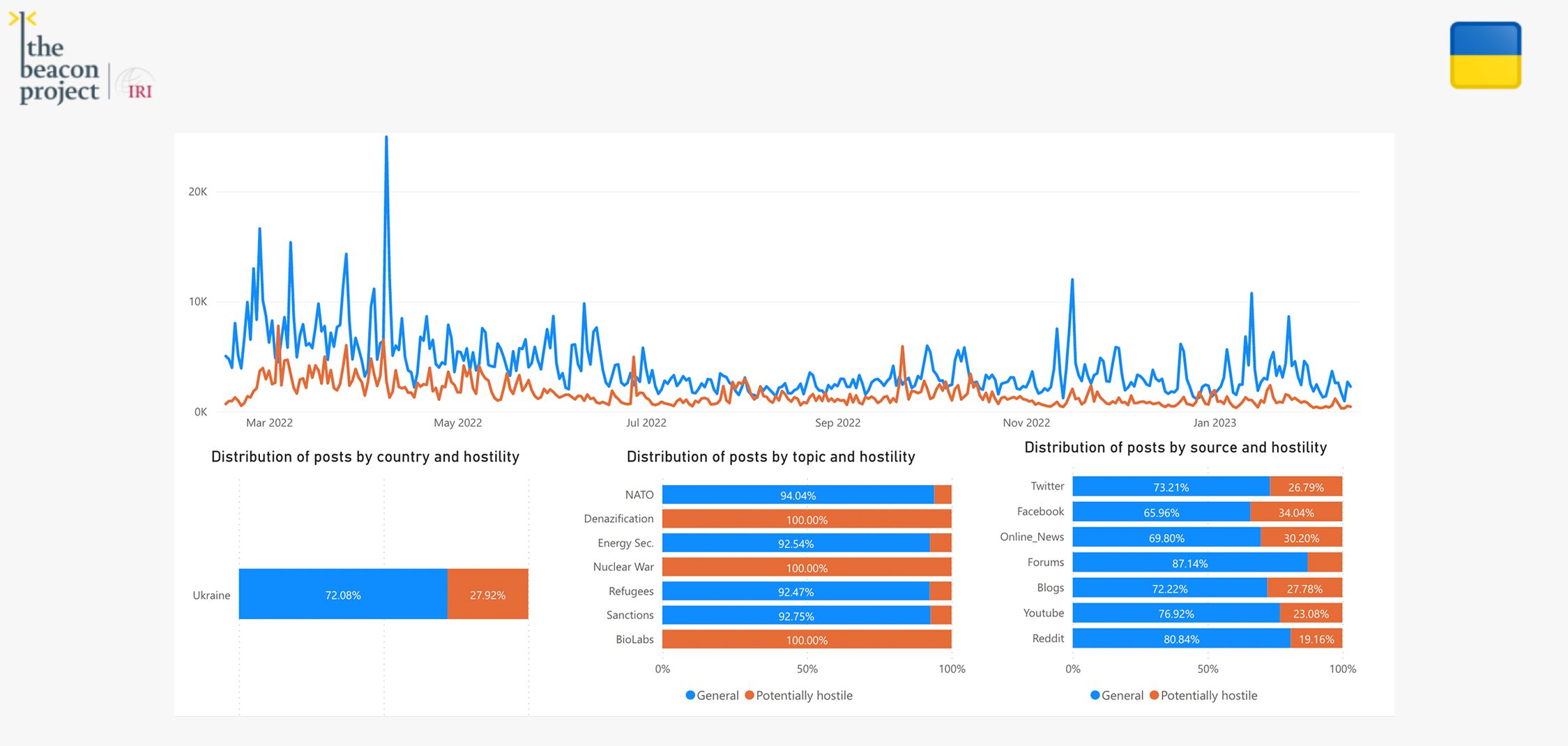
Feature #1. Rapid and total “Ukrainization” of the public information space and displacement of the Russian language from it.
The shift towards a Ukrainian-language dominant media space is not solely a result of the new language legislation in Ukraine, which was established between 2014-2019. Rather, it is largely due to the public’s reaction to the Russian invasion, with many associating the Russian language with Russia itself.
Although many Ukrainian media outlets still maintain Russian-language versions of their websites, the default starting page is almost always the Ukrainian-language version, and the vast majority of official communication in social networks is also conducted in Ukrainian, which, by the way, is a requirement of Ukrainian language legislation (came into effect on January 16 and July 16 2022 for print and online media including social media). Hence, during the year of the Russian invasion, the Ukrainian language established itself as the #1 language for public communication in Ukraine. The dominance of the Russian language in the information space of Ukraine and the clear division of the media by language, as well as the binding of the media’s language to the geopolitical orientation of media (if media is Russian-language it means it is most likely pro-Russian) are a thing of the past.
Feature #2. The level of influence and penetration of pro-Russian and Russian media in the Ukrainian media space has definitely been sharply decreasing in the last 2 years.
The key event in this regard is that a year before the start of full-scale Russian aggression in Ukraine, from February 2021, the NewsOne, ZIK and “112” TV channels were blocked (including on social networks). These channels were under the control of Viktor Medvedchuk – an indirect relative of Vladimir Putin and his main agent of influence in Ukraine. They were the main springboard and infrastructure for spreading pro-Russian and anti-Western narratives inside Ukraine and from Ukraine.
Already after the full-scale invasion of Ukraine, 2 other resources with a clear pro-Russian position and a considerable audience were blocked: the channels of the blogger Anatoly Shary (primarily YouTube) and the Strana.ua outlet.
It is also important to emphasize that a large number of propagandistic Russian media such as Russia Today and Life have been blocked in Ukraine for a long time (since 2014), while media outlets such as RIA Novosti, Lenta Ru, Gazeta Ru and many others are still available in Ukraine.
The key trend regarding the work of Russian and pro-Russian media in Ukraine is the following: if earlier, by 2021, there was an attempt to build in Ukraine a sustainable media infrastructure that would openly spread Russian narratives at the mainstream level, now pro-Russian media operate in the format of special operations and migrate to such platforms like Telegram as #1, access to which is not blocked yet, and where they can maintain high anonymity and build a large audience quickly (The Telegram channel of the already mentioned pro-Russian blogger Anatoly Shariy has more than 1 million subscribers).
Feature #3. The Telegram turned into a key platform for spreading pro-Russian, anti-Ukrainian and anti-Western messages and narratives.
This trend and already the new reality is the result of the process described above, as well as the result of business development of Telegram as such. But one of the main challenges in this regard is that it looks difficult to measure and assess the influence of the Telegram. In March 2023, a public discussion and even advocacy campaign for blocking Telegram as an application, which is controlled by Russian special services and constitutes and poses a threat to Ukraine’s national security, began in Ukraine at the level of experts and officials.
Feature #4. Partial de-oligarchization of the Ukrainian information space.
This is primarily due to the closure of the media business of the richest man in Ukraine, Rinat Akhmetov. TV channel “Ukraine”, which has been in the leading position in recent years and its Facebook page still remains in the top 30 most popular pages in terms of the level of interaction in socio-political topics, although the page has not been updated since July 11, 2022 (At the same day Rinat Akhmetov and his SCM announced their withdrawal from the media business).
Feature #5. Legitimately increased attention, reach and interaction on pages in social networks (primarily Facebook) of official state institutions.
This trend is valid for both national (for example, Office of the President, General Staff of the Armed Forces of Ukraine) and local authorities (for example, the page of Lviv Mayor Andriy Sadovoy) with civil, security and military profiles.
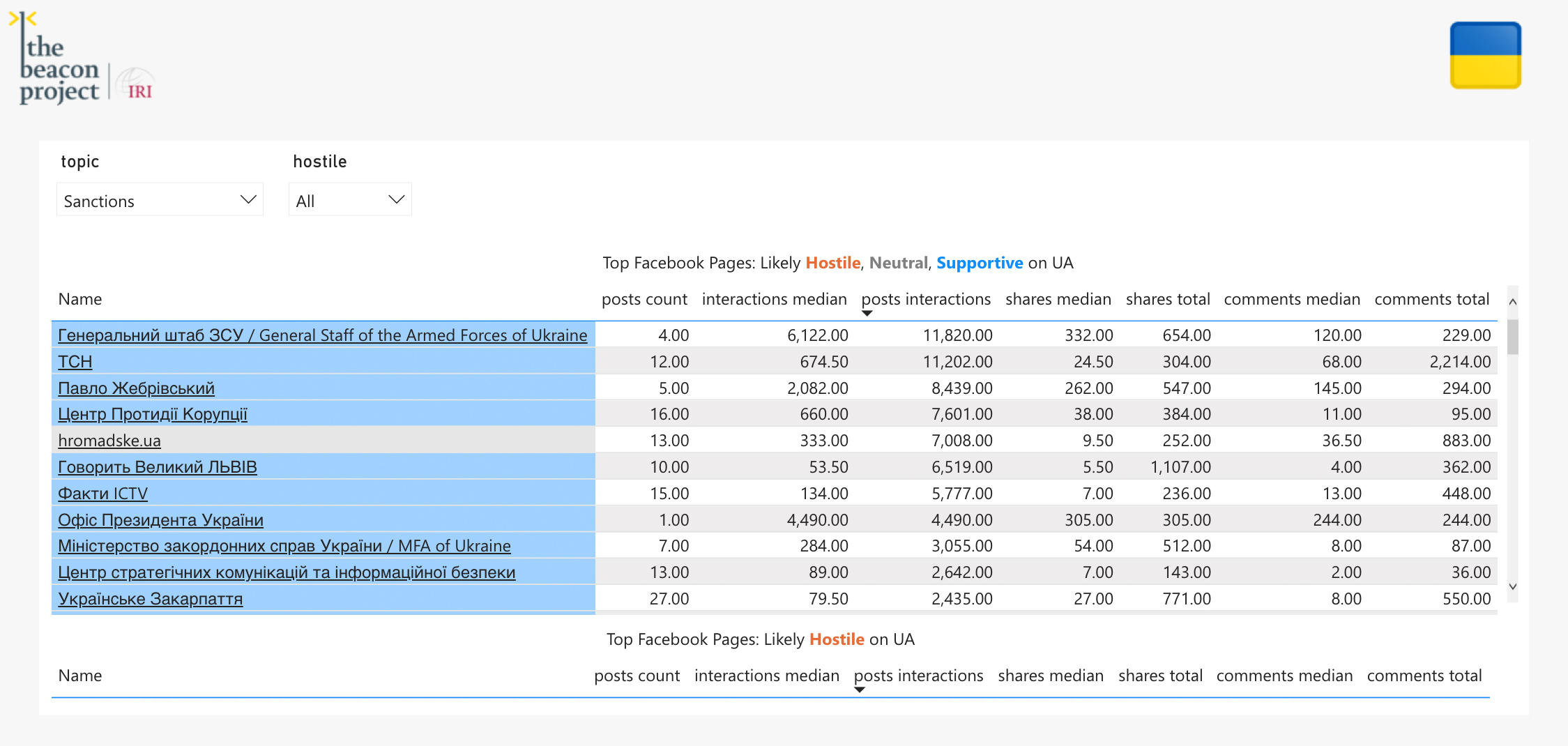
This appears to be a logical response to the need for reliable information in wartime conditions, in particular after the start of Russia’s massive shelling of civilian infrastructure and as a result – massive power outages and blackouts across the country.
Feature #6. There is an obvious increase in the audience and interaction on Facebook pages that have a geographical connection to the western part of Ukraine.
This is explained by a number of factors: 1) due to Russian aggression, a large number of Ukrainians (IDPs) moved to the west of the country from the east, south, and even the center, including relocated mass media; 2) the western regions of Ukraine were and remain more stable from the point of view of communication, production and consumption of information; 3) unlike a significant part of media from the center, east and south of Ukraine, local and regional media of western Ukraine have retained investors, who are often local oligarchs and representatives of clans; in other words, the oligarchic media of western Ukraine proved to be more stable because their investors did not lose their businesses.
Feature #7. Western media outlets became agenda and narrative setters, as well as the key donor of quality content.
Primarily, it is about such media outlets as the Washington Post and The New York Times, which announced the opening of their offices in Ukraine after the start of the full-scale invasion of Russia, and others. Important to stress in this regard, that until 2014, before Russian aggression started, such role of agenda and narrative setters very often was played by Russian media outlets.
Feature #8. Personal media brands began often to replace and compete with mass media outlets.
For example, in terms of activity and reach, ex-president Petro Poroshenko’s pages on Facebook and Twitter occupy leading positions, using such activity for positioning himself as a “shadow president”.
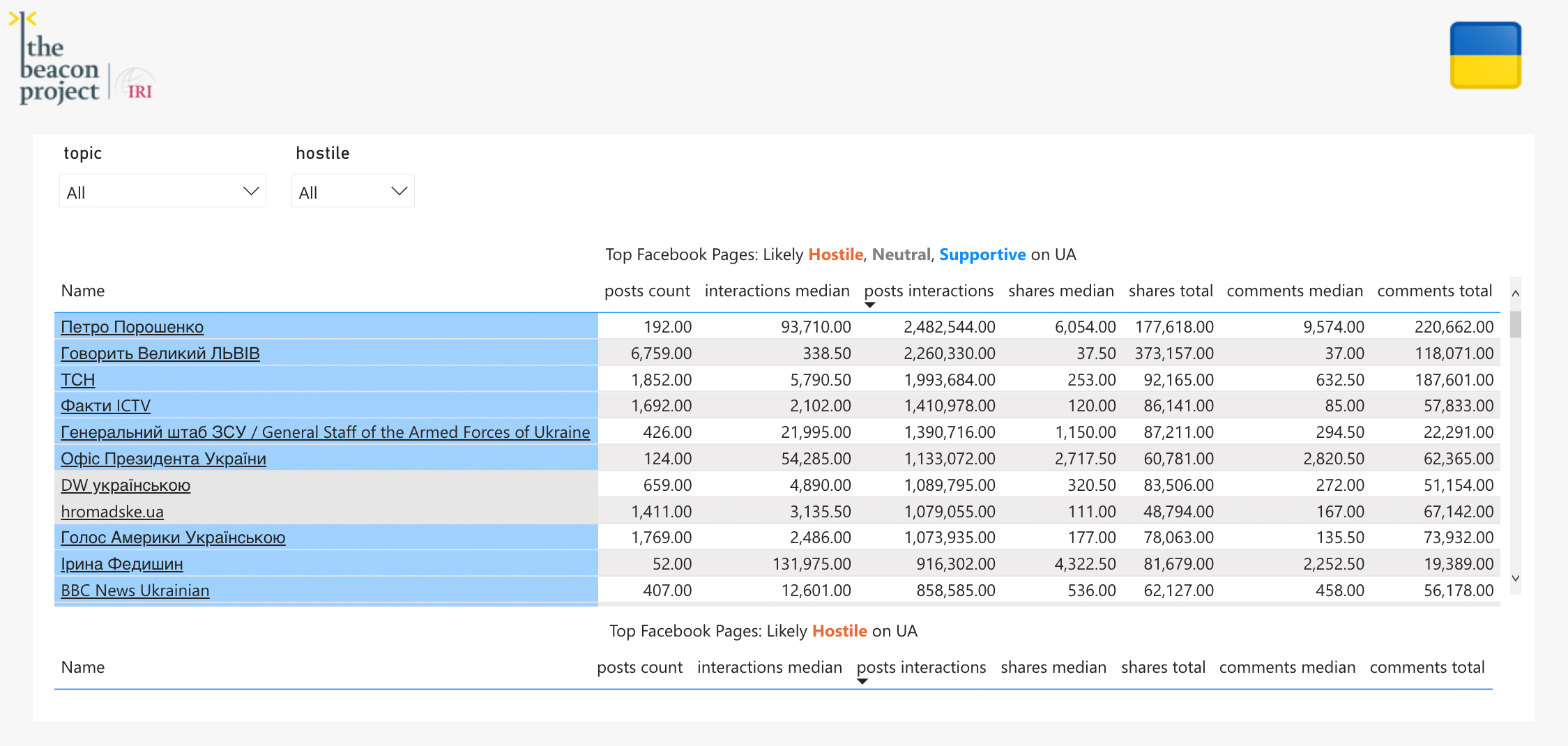
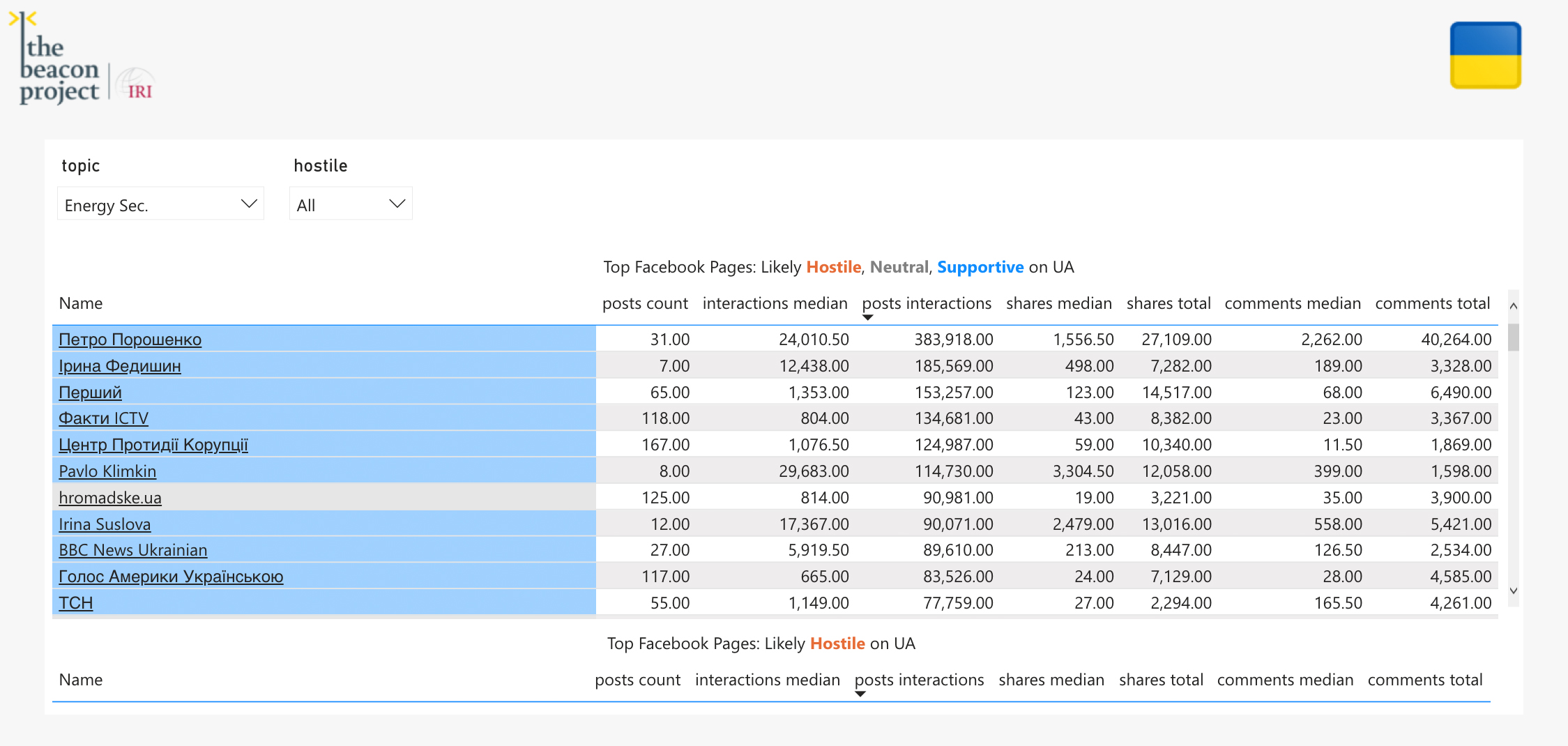
Among the most popular Facebook pages within the focus of IRI’s study there are profiles of journalists (Andrii Tsaplienko, Yuriy Butusov), politicians (Petro Poroshenko, Pavlo Klimkin, Oleksiy Arestovich). The development and increasing audience by the personal Telegram-channels is not just a trend already, but a challenge which needs to be studied.
Feature #9. Ukraine-West relations is one of the main topics with high potential of hostility. There is a strong need for a stratcom and policy approach.
Paradoxically, while all opinion polls in Ukraine in 2022 showed an unprecedentedly high level of support for Ukraine’s membership in NATO, due to IRI’s research Ukrainian expert and political communities were one of the key sources for anti-NATO and anti-Western messages in Ukraine during the year after the Russian full-scale invasion.
Apart from the big part of most popular messages with hostility towards NATO and the West, which is a part of Ukraine’s advocacy campaign for more military support from the West, led since the very beginning of invasion by president Volodymyr Zelenskyy, there are anti-NATO / Anti-Western sentiments in Ukraine.

The vast majority (86.1%) of all media content collected in this study was related to the West/NATO topic. That is 1,367,566 pieces out of the 1,588,540. This topic importantly also contains references to military support more generally as well. Therefore, despite the potentially hostile messaging only accounting for 5.96% of the topic’s coverage, it still amounts to 81,494 articles or posts which is larger than the total amount of content discussing refugees or sanctions combined.
These hostile messages were mostly related to Ukrainian perception of such sub-topics as:
- Ukrainian demands to NATO / West regarding “closing the sky” and “weapon supply” (Patriot systems, jets, tanks, etc). The main spikes were during March and April 2022, and then during October-November 2022 and January 2023;
- discussions about possible peace negotiations initiated by the West and its leaders as the “inclination of Ukraine towards a peace deal with Russia at the expense of Ukraine”. Main spikes were in May and October-November 2022;
- Ukraine’s membership in NATO and conditions for it. The main spikes happened after in the end of September president Volodymyr Zelenskyy publicly announced that Ukraine applies for NATO membership;
Another sub-topic of hostile messages regarding NATO and West as such widely spread in Ukrainian media space was the idea of NATO peacekeeping mission in Ukraine, which appeared on the agenda at the initiative of the Polish side in March 2022 and was publicly rejected both at the NATO level and at the level of member-states.
The key hostile narratives, which were identified during the annual study, are very straight and oftenly united in one semi-conspiracy theory, which could be formulated like this: “West, NATO and some key member-states are afraid to react properly to Russia’s actions towards Ukraine, are playing double game with Ukraine, just use Ukraine for their own geopolitical purposes via the proxy war approach, don’t want Ukrainian forces to move further to de-occupy the rest of Ukraine, will never give Ukraine a NATO and EU membership, sooner or later they will betray Ukraine as it was with annexation of Crimea and Donbas in 2014, and now is going to incline Ukraine to peace on Russia’s terms and conditions for coming back to business as usual with Russia as soon as possible”.
Starting from February 24, 2022 (and even before that), each “piece” of this conspiracy can often be found in the Ukrainian information space both separately and in combination with others. Moreover, such narratives are spread by both ordinary users and political experts, politicians and high-ranking officials. These hostile messages targeted not just NATO, but exact countries or persons, first of all USA and Biden, Germany and Olaf Scholz (sometimes still Angela Merkel), France and Emmanuel Macron.
The best illustration of such anti-Western rhetoric by the part of pro-Western forces in Ukraine is the reaction to the tragedy in Poland, when a missile of Ukrainian air defense fell on Przewodow, a village just a few kilometers from the Ukrainian border, two people were killed. Here are a few examples of the flood of speculation along with conspiracy frames which are described above. It is important to emphasize that all these were spread by the expert community and politicians with mainly pro-Western orientation, from whom it is rationally expect explainers and management of public expectations, rather than speculations and conspiracy:
- Example #1: Youtube interview (more than 1 million views) on November 16 by probably the main Ukrainian public military expert Oleh Zhdanov with narratives: “This is a deliberate strike on the part of Russia”; “Putin raises the stakes and provokes the NATO”, “NATO will swallow this provocation, because they are weaklings”
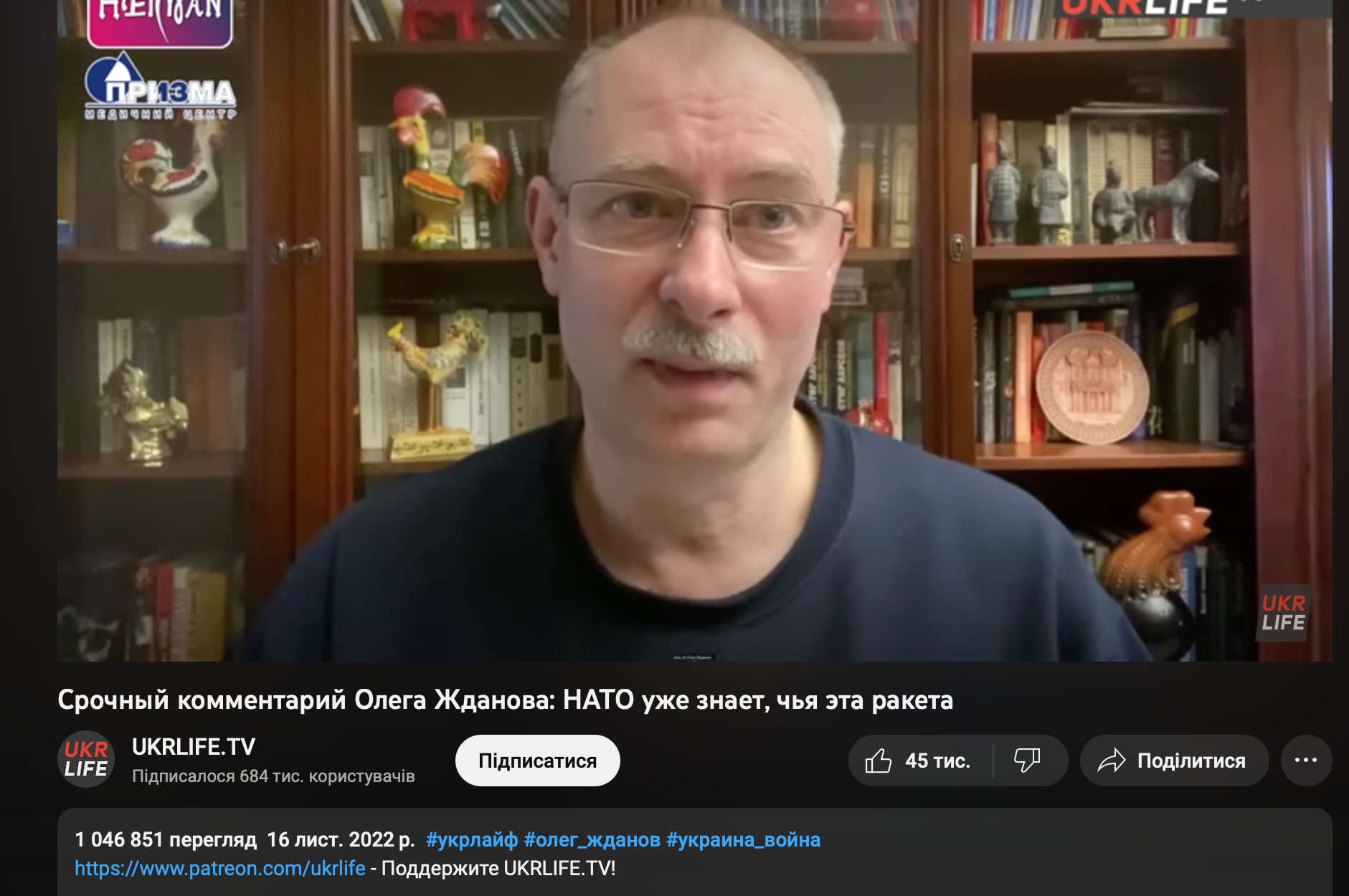
- Example #2: Facebook post (more than 5K interactions) on November 16 by Volodymyr Parasyuk, former member of Ukrainian Parliament: “NATO is afraid to go to war. Russia is really afraid of NATO! Only Ukraine is not afraid of anything, because we have nothing to fear anymore! In this war, fear became the catalyst for the whole world! Everyone will be looking for 1001 reasons to separate rather than one to put a psychopath in his place! But history does not forgive mistakes and the world has already gone through it once, the price was very high then. A harsh response to the aggressor will not lead to the third world war, but avoiding this response will play its key black role! So they thought a little and continued their work. We still have Donetsk, Luhansk and Crimea waiting for us!”
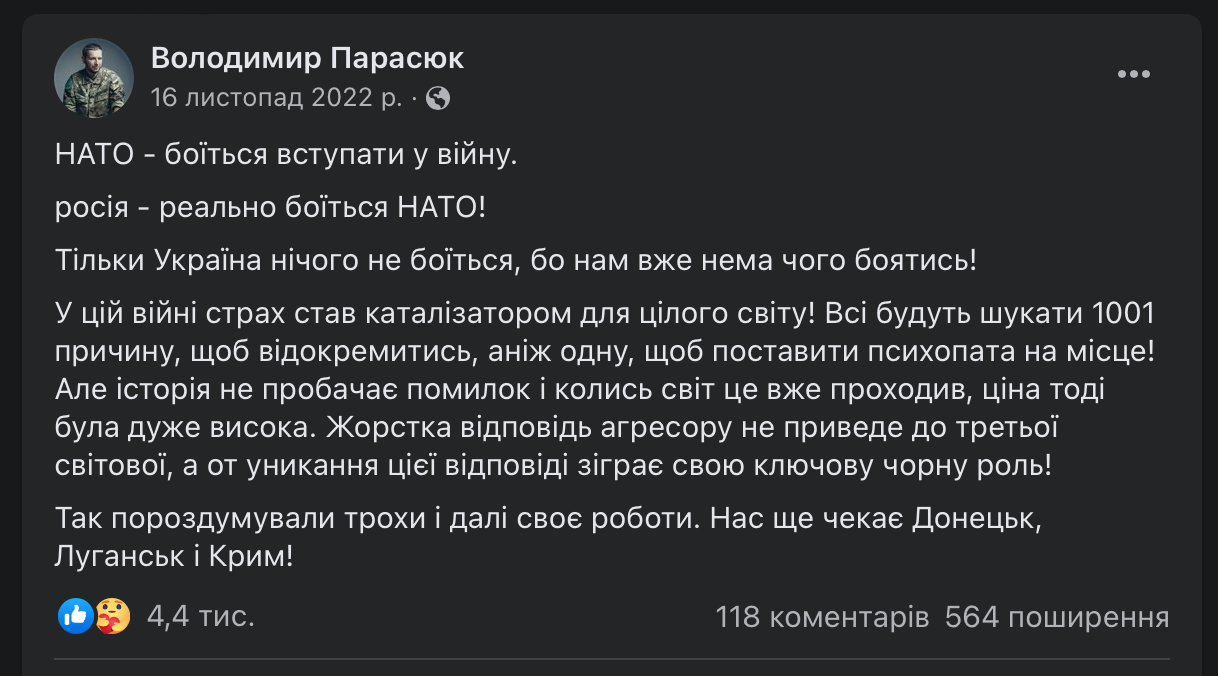
All these shows the strong need of joint policy interventions: The Ukrainian and international expert community have to switch from the mode of advocating the decisions of their states to an explanatory approach of what decisions are needed and why some decisions couldn’t be made now or never. These expert communities should cooperate more with each other in the format of networks, as well as with media to become the bridge and facilitator between political leaders of the West and Ukraine. International donors should take a lead in creation of such networks and their development into policy oriented task forces.
Feature #10. The key challenge for informational security of Ukraine is not any more Russian disinformation and propaganda, but weak and lack of stratcom and state media interventions to prevent misinformation and conspiracy. Mismanagement of public expectations in a country at war could lead to crisis situations and social traumas.
The case study in this regard is viral energy conspiracy. Since October 30 in the Ukrainian segment of Facebook, as well as media space as such, has started to spread virally the piece of content, in many cases without the original author of the publication, about the conspiracy of fan blackouts in Ukraine. The key narratives, which were spreading within this piece of content, are: 1) there is no objective need for blackouts, there is enough electricity for people; 2) the electricity network of Ukraine is a private property and the real owners, but not Ukrainians and Ukrainian state should restore the damaged grids; 3) all this is the plan of big business to profit and “restore the material base of one’s own business at the expense of the state and foreign donors”.

The author of initial post of this conspiracy is real person Anatoliy Yaroshenko (Yaroved) from Chernihiv (the Ukrainian city in the north of the country) with no clear ties to any political or foreign actor. Interestingly, that initial post as such was not so viral (more than 900 likes, approx 200 comments and 1,3K shares), but the content of the post became viral and was re-published by many others (As an example, first and second) in social media.
During November this conspiracy, as well as fan blackout as such, was used by Russian and pro-Russian actors to provoke riots and protests in Odesa (in the south of Ukraine, Ukrainian Black Sea port): on November 18th, after the massive shelling by Russia on November 15, group of locals blocked one of the street calling Odesa officials to manage the situation (people complained for 3 days without electricity and any information from authorities). The same and for the same reason had happened on November 19. Russian and pro-Russian actors used Telegram as the main channel for stocking tension (One of Telegram-channel through, which were used to provoke protests in Odesa, has official title in its disclaimer as the “Digital Army of Russia”) and spreading mis- and disinformation in this regard.
Moreover, since November another conspiracy became viral: Ukraine is selling electricity to Europe while Ukrainians suffer without electricity. Important to highlight that this conspiracy was spread (from 6:22 in this video Yulia Tymoshenko is talking about the export of electricity from Ukraine to Hungary despite Ukrainian officials many times refuted this fact, explaining that there was and is electricity flows in the joint system ( ENTSO-E), but not export. The video is taken from the United News TV Marathon, where Yulia Tymoshenko was invited as the speaker) also by a prominent Ukrainian politician with basically pro-Western orientation Yulia Tymoshenko, using her credibility as ex-prime minister of Ukraine and ex-deputy prime minister for the fuel and energy complex.
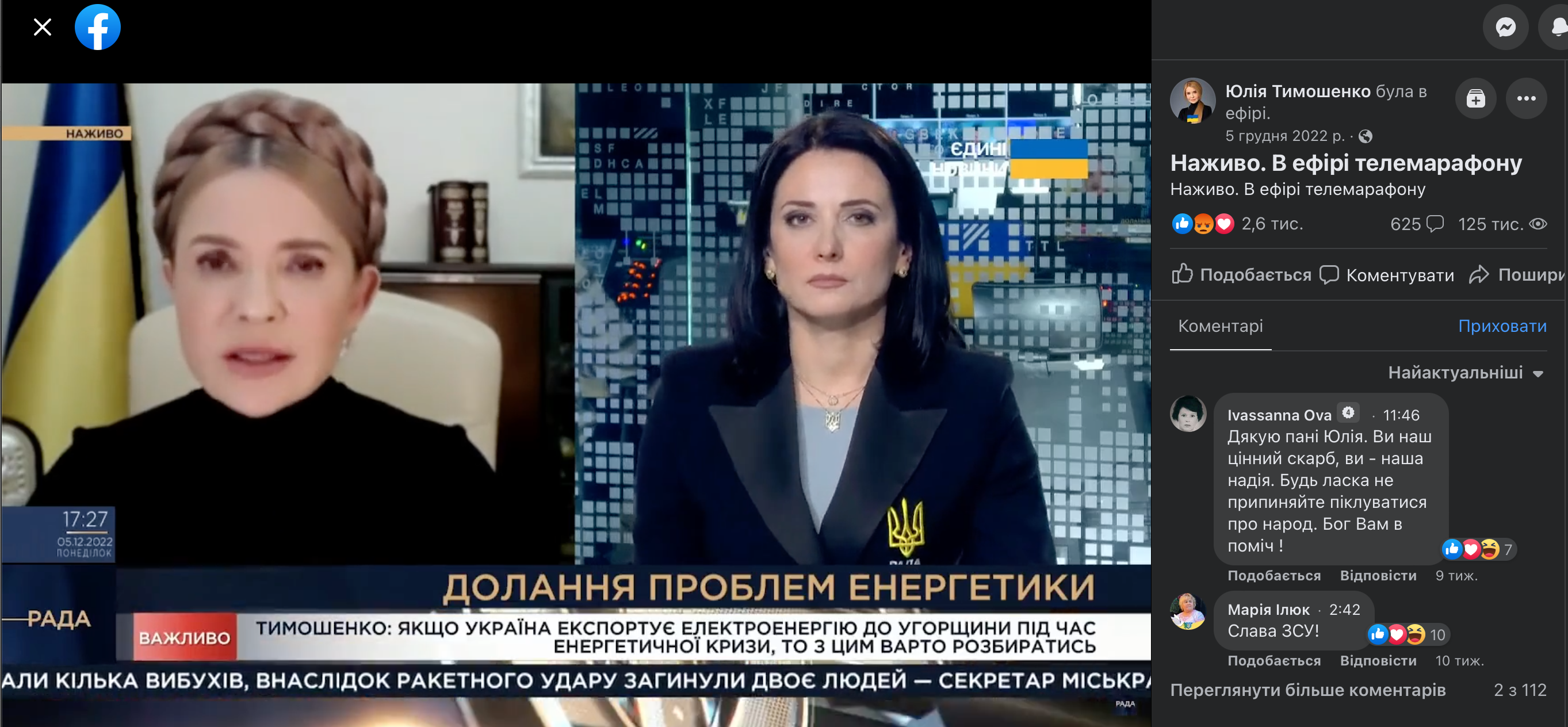
Hostile narrative research is conducted with the support of the International Republican Institute’s Beacon Project. The opinions expressed are solely those of the authors and do not reflect those of IRI.
Cover photo: Serhiy Hudak

